Sennheiser IE900 Review - A major step forward, but is it enough?
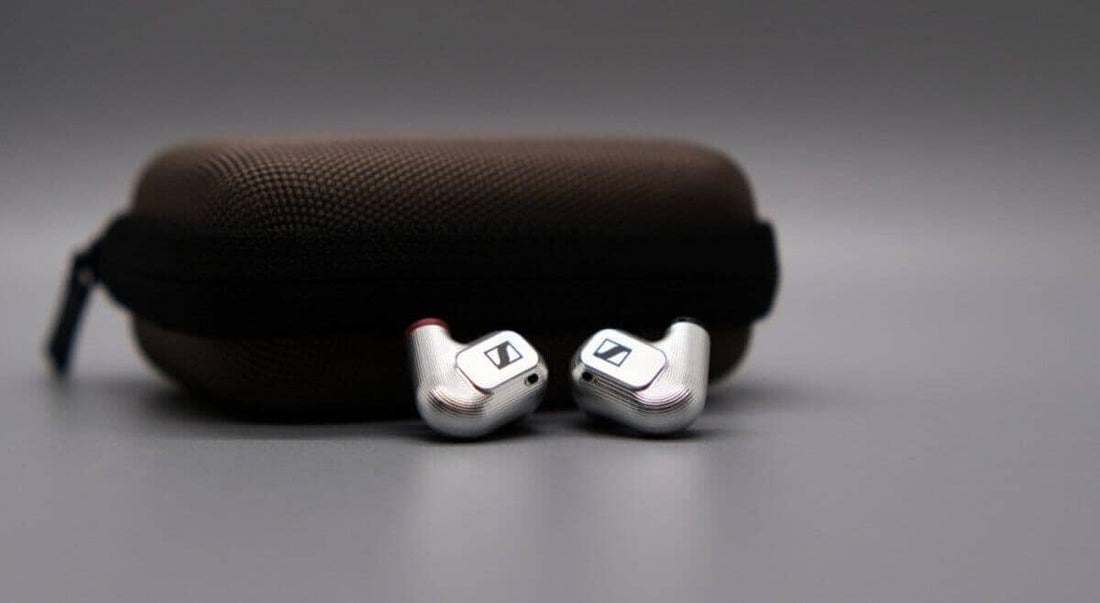
Introduction
The IE300. The IE800/S. Name any Sennheiser IEM, and I have to admit that I'm probably not too fond of it. Perhaps that's why I begrudgingly put off making the drive down to Sennheiser San Francisco to hear the brand's latest flagship IEM, the Sennheiser IE900. But imagine my surprise when I actually got around to hearing the IE900...and I liked it. Heck, I remember straight-up telling Julian, the awesome employee who got me set up, "Yup, this is the only Sennheiser IEM that I have any intention of ever purchasing". We both agreed that it was leaps better than the company's previous flagship IEM, the IE800S, which I A/B-d the IE900 with for comparison. Of course, topping an outdated (and quite frankly, underwhelming) flagship IEM is one thing. So in this review I'm going to answer the question of whether the IE900 actually stacks up to its current competition and if it merits the hefty $1300 cost of entry.
This unit was purchased for review with my own money. As usual, what follows are my honest thoughts and opinions to the best of my ability.
Source & Drivability
All critical listening was done off of my iBasso DX300 and iPhone X with lossless files. The stock cables and the stock silicone tips (size small, this is important) were used. The IE900 takes a little more power to drive, but I had no issues driving it to my comfortable listening volumes (~70dB). The IE900's impedance curve is also largely flat, meaning that the source you use should not have an effect on the IE900's frequency response.
The Tangibles
The IE900 comes in sparse packaging that includes the following accessories:
- MMCX cables terminated in 2.5mm/3.5mm/4.4mm
- Silicone tips s/m/l
- Foam tips s/m/l
- Cleaning tool and cloth
- Case


I have a love-hate relationship with the included cables. They feel robust and high quality, and I appreciate that three were included to cover all the common terminations. But the integrated memory wire is painful to adjust and doing so frequently breaks the seal of the IE900, something I'll elaborate on below. There's a good reason why most manufacturers have long-since abandoned memory wire. The IE900's MMCX connectors fall into the same "love-hate" category that the cables do. They have a raised guard to protect the connectors from undo strain, but this means that most aftermarket cables are off the table.
One thing I'm unequivocally not a fan of, though? The stock silicone tips. They frequently break seal, likely a result of the overly thin walls collapsing against the ear canal when inserted. Pretty much everyone I've talked to has this issue to some extent, and this means that I have to angle the IE900 slightly clockwise when seating them in my ear.
It's also worth noting that the stock tips have a foam filter inside. According to Sennheiser, the filter inside the tips is simply for purposes of catching excess wax; it should not have acoustic effect. But measurements disagree, as does subjective listening. The filter dampens the treble by about 1dB; certainly not a big deal normally, but relevant when considering other tips and given the precarious balance the IE900 strikes in the mid-treble. The IE900 is incredibly tip sensitive. Even the size of the silicon tips made a difference; the smallest ones noticeably having the best slam and bass tactility. Medium silicone tips dialed sub-bass back by about a decibel and smoothened out the mid-treble some more, lending to a less U-shaped sound. The stock foam tips were about on par with medium silicone for bass quantity, but generally blunted transients and rolled-off the air frequencies more than I'd like.
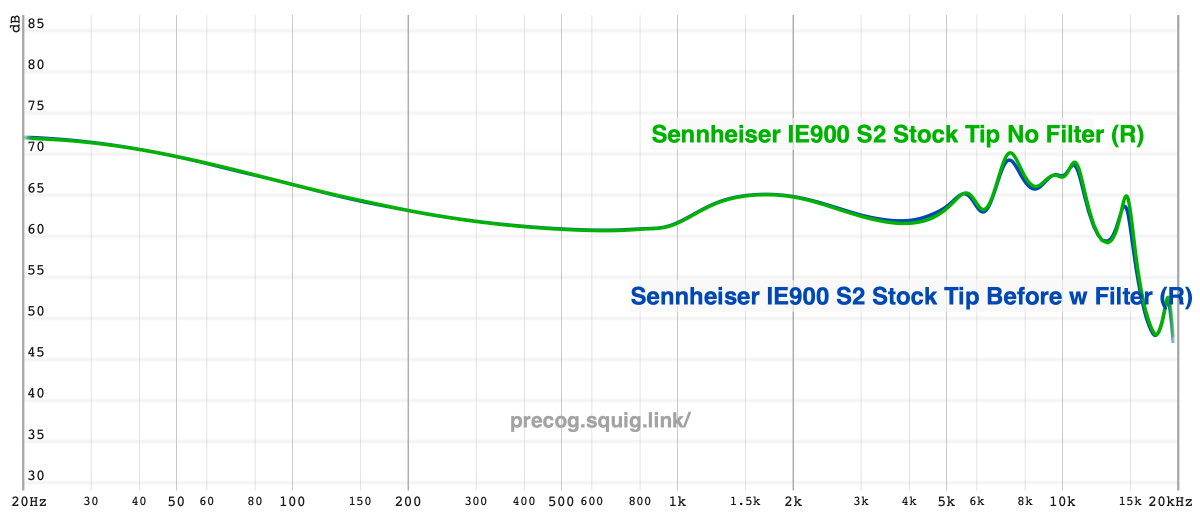
The IE900 itself is small! I distinctly remember being shocked at how minuscule they actually are when I first saw them at the Sennheiser SF store. The design is quite ergonomic, and I imagine that most listeners will have no problem getting the IE900 in their ears; really, it's the darn seal issues with the tips that present the biggest concern. The shells of the IE900 appear to be milled entirely out of aluminum. Personally I would like to have seen a more fancy metal being used, such as titanium, to really give the IE900 the premium treatment. But the choice of material makes sense given that the IE900's X3R system (a trio of resonator chambers designed to attenuate and smoothen treble) is integrated directly into the shell. Aluminum is machined easily and would allow for the most consistency when trying to achieve high tolerances. Stack on the simplicity and robustness of a single DD design and, like most of Sennheiser's premium products, you know you have a product that is going to last you for years to come.
Sound Analysis
The measurement below was taken off of an IEC-711 coupler. Measurements after 10kHz should not be considered entirely accurate.
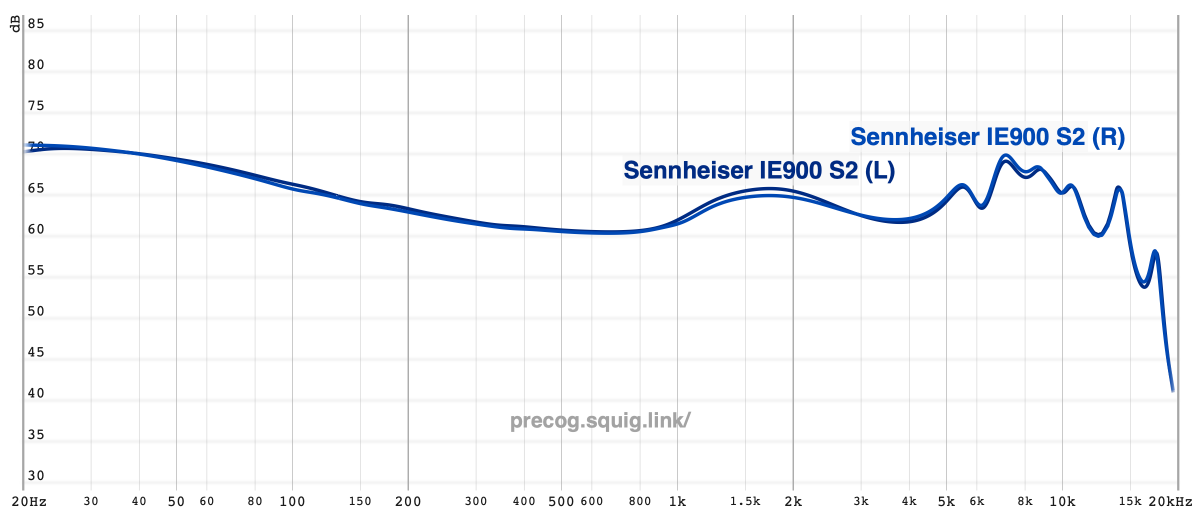
Clearly, I'm not too happy about the usability of some of the accessories. That in mind, I bought my own unit and persevere through these issues for the actual sound. The IE900 follows the U-shaped tuning profile that characterizes most of Sennheiser's other IEMs with some minor tweaks here and there.
Bass
The bass response of the IE900 is considerably south of neutral, sporting a largely sub-bass oriented curve with a smidge of mid-bass for an extra kick of fun that's right up my alley. It is nothing short of excellent bass, and here, we really need to talk about dynamics. Dynamics are indicative of gradations in volume; that in mind, a bass response should present itself with a certain "bounciness" (at least to my ears) if a transducer is replicating bass notes properly. Suffice it to say that the IE900 just might have the most uncompressed, dynamic bass I've heard of an IEM. Other usual suspects of bass quality - from texture, decay, and to slam - are unabashedly worthy of world-class status too. Frankly, it's almost hard to believe that a 7mm dynamic driver is pulling off a bass response this good, but it would not be an understatement to say that the IE900 might have one of the best bass responses I've heard in portable audio. It at least trades blows with established greats like the Sony IER-Z1R, 64 Audio Tia Trio, and Empire Ears Legend X.

Midrange
Gushing over the IE900's terrific bass response aside, the midrange is where the IE900 stumbles: It has no pinna compensation. Well, that's not quite accurate. It has inadequate pinna compensation and then opts to recess all of the upper-midrange. This results in a decidedly U-shaped presentation, wherein higher-pitched, stringed instruments like violins tend to fall into the backdrop more than they should (Sawano Hiroyuki's "Binary Star" from 2:58 to 3:20) and electric guitars - take for example the opening of Keith Urban's "Kiss a Girl" - lack appropriate bite. Female vocals also generally sound...veiled. And even worse? The egregious recession from 2-5kHz lends to a disconcerting center image with which it's difficult to pinpoint, positionally, where vocalists that usually token the center come from. Now, I'm well aware that the recessed upper-midrange is an intentional tuning decision on Sennheiser's part. This is because it effectively kills any sibilance that might otherwise be present. But you'd need much more reason to convince me that this midrange doesn't need work when there's other IEMs that aptly toe this same line like the 64 Audio U12t and the Campfire Audio Andromeda 2020.
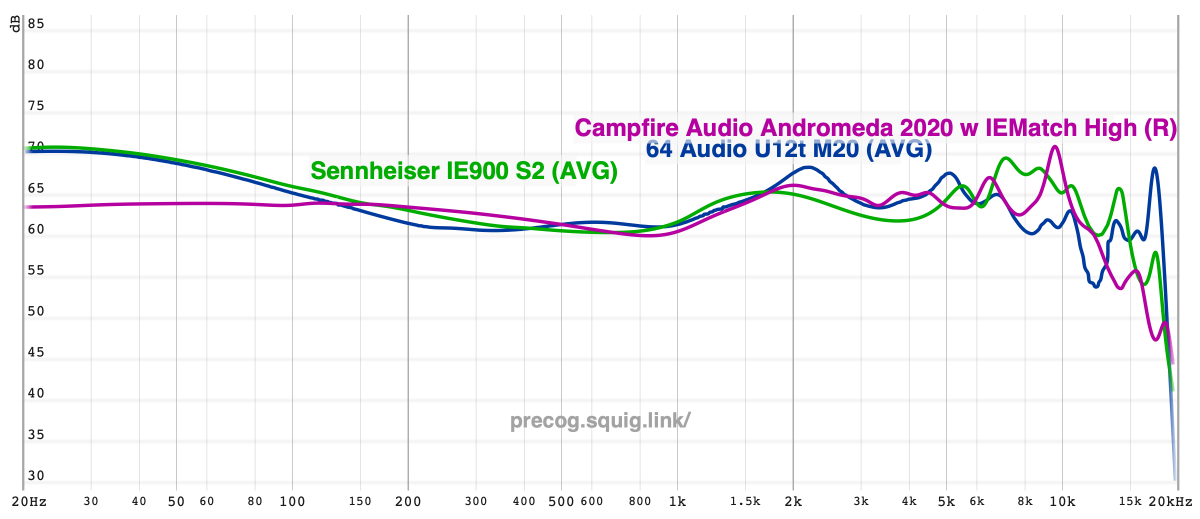
Note the differences in amplitude from 2-5kHz. Both the U12t and Andro 2020 already sport what most would consider a relaxed pinna compensation and presence region.
Treble
Now, I suspect that you'll see a wide range of opinions on the IE900's treble. At least for me, the IE900's treble response is one that dances oh-so-close to the sun, but never loses its wings. It is characterized by a wide elevation from 7-9kHz, throughout the mid-treble, which lends to substantial amounts of sparkle. Of utmost importance here is the IE900's remarkable tonal control with which it approaches and slopes off of this plateau without any egregious peaks or valleys. Thus, while it unmistakably leans brighter, it is by no means harsh or sibilant to my ears. And this is coming from a regular listener of K-Pop, which is notorious for ungodly amounts of zing and brightness! Attack is extremely well-defined, and sheer extension is superb, maintaining sufficient presence in the post-15kHz regions. I find little fault with this treble response - on the contrary, I rather like it - but be aware that pending fit and listener preference, some might find the IE900's treble somewhat "spicy" for lack of a better word.
Technical Performance
In general, the IE900 is one of the most technically competent DDs I've heard, comfortably playing ball within the realm of even many full-BA and hybrid setups in its price range. Obviously, it's not playing with the top dogs of its price range for technicalities, but that's certainly not too shabby.
Transients lean medium-fast on the IE900, taking a more tactful approach that benefits timbre. When transients decay too quickly, for example, this will often lend to the perception of "etch" which the IE90 is thankfully devoid of. Likewise, the IE900 demonstrates that the relationship between speed and resolution is not always positively correlated. There is a good sense of vividness to note attack, benefitting micro-dynamic engagement, and note definition is within flagship parameters to my ears. Macro-dynamics on the IE900 are solid, but I think they could be better. The IE900 is competent for scaling crescendo/decrescendo swings - so gradual shifts in volume - but I do feel that it can get "caught off guard" and sound slightly sluggish when it comes to more abrupt, explosive swings in loudness.
The biggest concern for most listeners would be the IE900's imaging chops. The IE900's imaging is mostly just average. As I alluded to earlier, the upper-midrange recession isn't really doing the IE900 any favors here, neuter perceived depth and confining the center image firmly to the head stage. Staging doesn't extend much further laterally or horizontally; the IE900 is a long way off holographic. Layering is alright, but given the more cramped staging, the IE900 often gives the impression that notes are being squeezed. It's certainly no Sony MDR-EX1000 on this front. But of course, that IEM has plenty of its own issues.

Playing with EQ
Most readers know that I'm not very fond of EQ, but I felt there was a lot of wasted potential here. My reviewer friends Toranku and Banbeu helped me get set up in REW to match the IE900's midrange to the IEF (Crinacle's) neutral target. The result fixes the upper-midrange suppression, and it adds back a lot of the bite that I felt was missing. What a remarkable difference it makes. In fact, if this was the stock tuning, I'd easily say the IE900 is the best single DD IEM that I've heard to date! But of course, my assessment of the IE900's performance will stand with the stock tonality.
If you'd like to try this EQ for yourself, here it is:
- Frequency: 1360, Gain: -1.3, Q: 1
- Frequency: 2900, Gain: 4.8, Q: 1.25
- Frequency: 4000, Gain: 2.6, Q: 1.95
- Frequency: 5500, Gain: -3.2, Q: 4.90
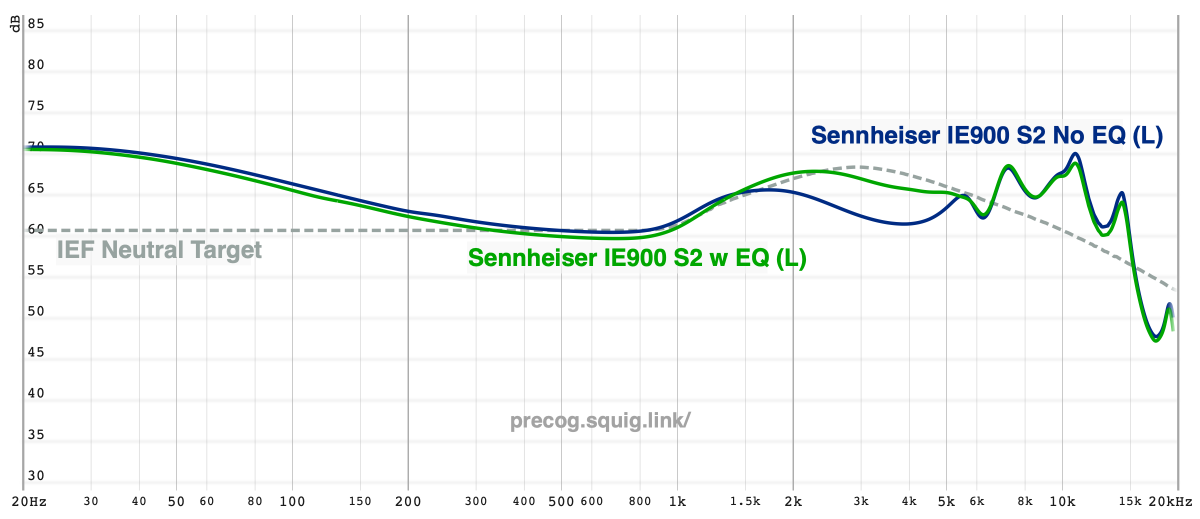
Select Comparisons
Sennheiser IE800S ($1000): The IE800S follows a similar tonality to the IE900 - so it has a similar suppressed upper-midrange - while opting to follow a more lower-treble oriented response that is reminiscent of the legendary HD800S headphone. But the IE800S really stumbles in the technical department. The bass on it is okay, if we're talking your average $200 DD IEM 'okay'. It also sounds pretty flat for dynamics; there's really no comparison on this front between the two IEMs. I'm going to be perfectly honest: Just swing the extra $300 for the IE900. There's stuff in the $200 bracket (think the Etymotic ER2XR, Tanchjim Hana 2021) that's playing ball with the IE800S nowadays.
Sony MDR-EX1000/MDR-EX800ST (discontinued/discontinued): The pair of single-DD legends that dominated the single-DD market for the past decade. Due to their partially open designs, these IEMs have superb imaging chops, easily besting the IE900 for soundstage and layering. Outside of that though, I don't find either very competitive anymore. The treble on them is grating due to a monstrous 5.5kHz peak, and neither holds a candle to the IE900's excellent bass or dynamics. Doesn't help that neither the EX1K nor the EX800ST has much extension over 10kHz.
You might be wondering why I even listed the IEMs above if they're clearly outclassed by the IE900. That's because those comparisons were done with direct A/B. Some other good points of comparison would probably be the Dunu Luna, Dunu Zen Pro, and Cayin Fantasy. From memory, the Dunu Luna has better macro-dynamics than the IE900, but lacks extension on both ends of the spectrum were the IE900 shines. The Dunu Zen Pro has better tonal balance than the IE900 - it has actual upper-midrange - but is not as technical and lacks the IE900's treble extension. The Cayin Fantasy isn't even in the equation here, sounding like a DD that was crammed into a shell without even tuning it.
The Verdict
I think there are a couple ways to frame the competitiveness of the IE900. Against the best IEMs in its price bracket, it simply comes up short in both the tonal and technical department - emphasis on the former. Even within the context of the single-DD arms race, it's still circumscribed by its upper-midrange issues which would eliminate a large demographic of listeners. But damn, the IE900 really does have the best bass response I've heard, and I can't get enough of its treble response too. That puts me in a predicament, as the IE900 is oh-so-close yet so far. But it's not like I've heard a tonally correct DD IEM at the flagship level anyways, as I've depicted above. That in mind, I'm going to give the IE900 a cautious recommendation. It won't be for everyone, but it definitely has its niche for those looking to scratch that fabled "single DD endgame" itch.

Reference Tracks
- Aimer - Hakuchuumu
- David Nail - Let It Rain
- Everglow - DUN DUN
- Girls’ Generation - Galaxy Supernova
- Illenium - Broken Ones
- Joe Nichols - Sunny and 75
- Keith Urban - Defying Gravity (2009)
- Keiichi Okabe - Weight of the World (NieR:Automata Original Soundtrack)
- Sabai - Million Days
- Sawano Hiroyuki - Best of Vocal Works Remastered (2020)
- Taeyeon - My Voice (2017)
- Tiffany - I Just Wanna Dance
-Precogvision
---
Buy the Sennheiser IE900 for the best available price.
Discuss the Sennheiser IE900 on the HEADPHONE Community Forum here.
---
